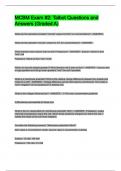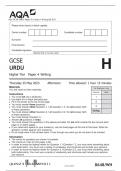Tentamen (uitwerkingen)
MCBM Exam #2: Talbot Questions and Answers (Graded A)
- Vak
- Instelling
MCBM Exam #2: Talbot Questions and Answers (Graded A)MCBM Exam #2: Talbot Questions and Answers (Graded A)MCBM Exam #2: Talbot Questions and Answers (Graded A)MCBM Exam #2: Talbot Questions and Answers (Graded A)MCBM Exam #2: Talbot Questions and Answers (Graded A)What are the standard accepted "no...
[Meer zien]






